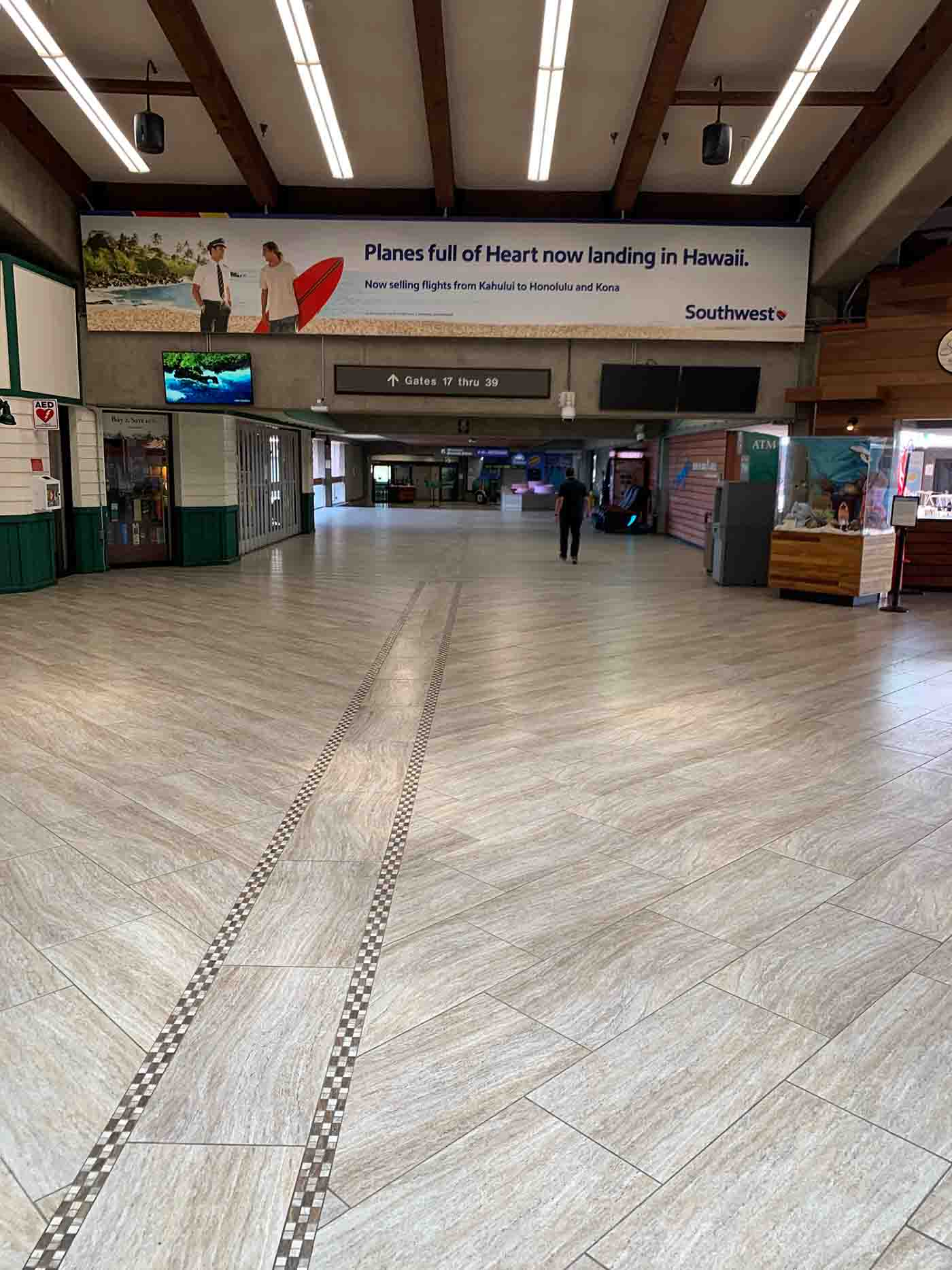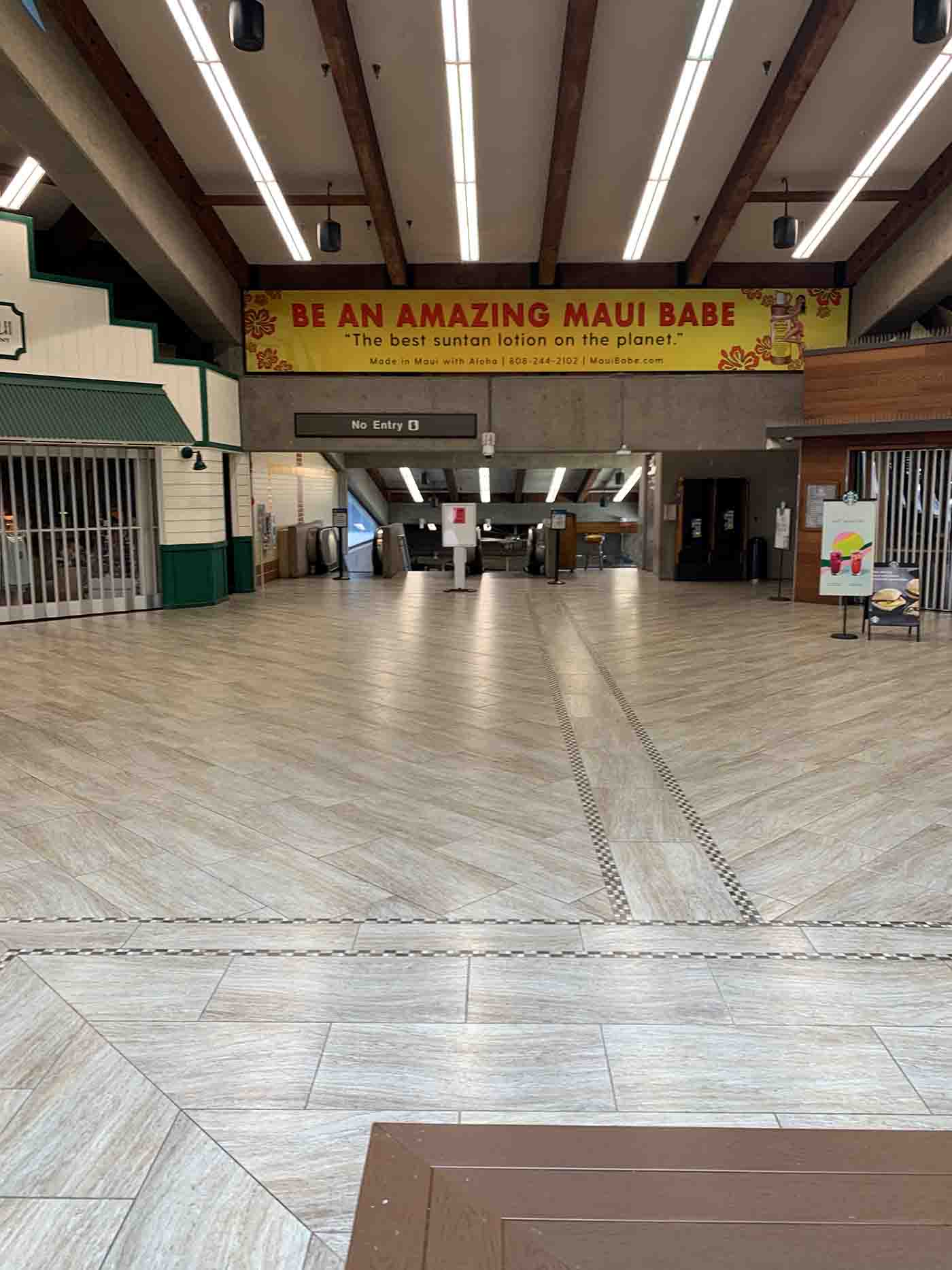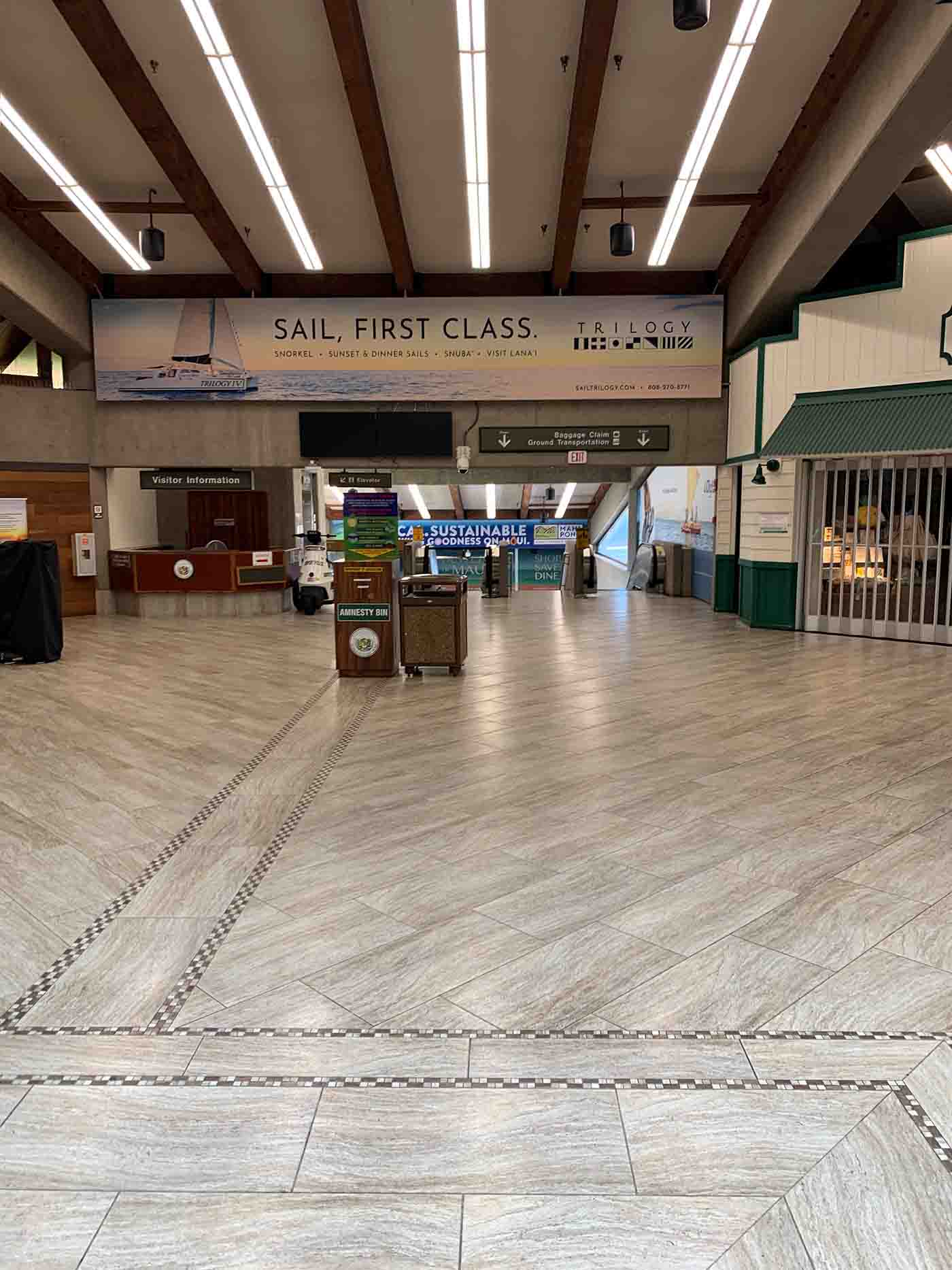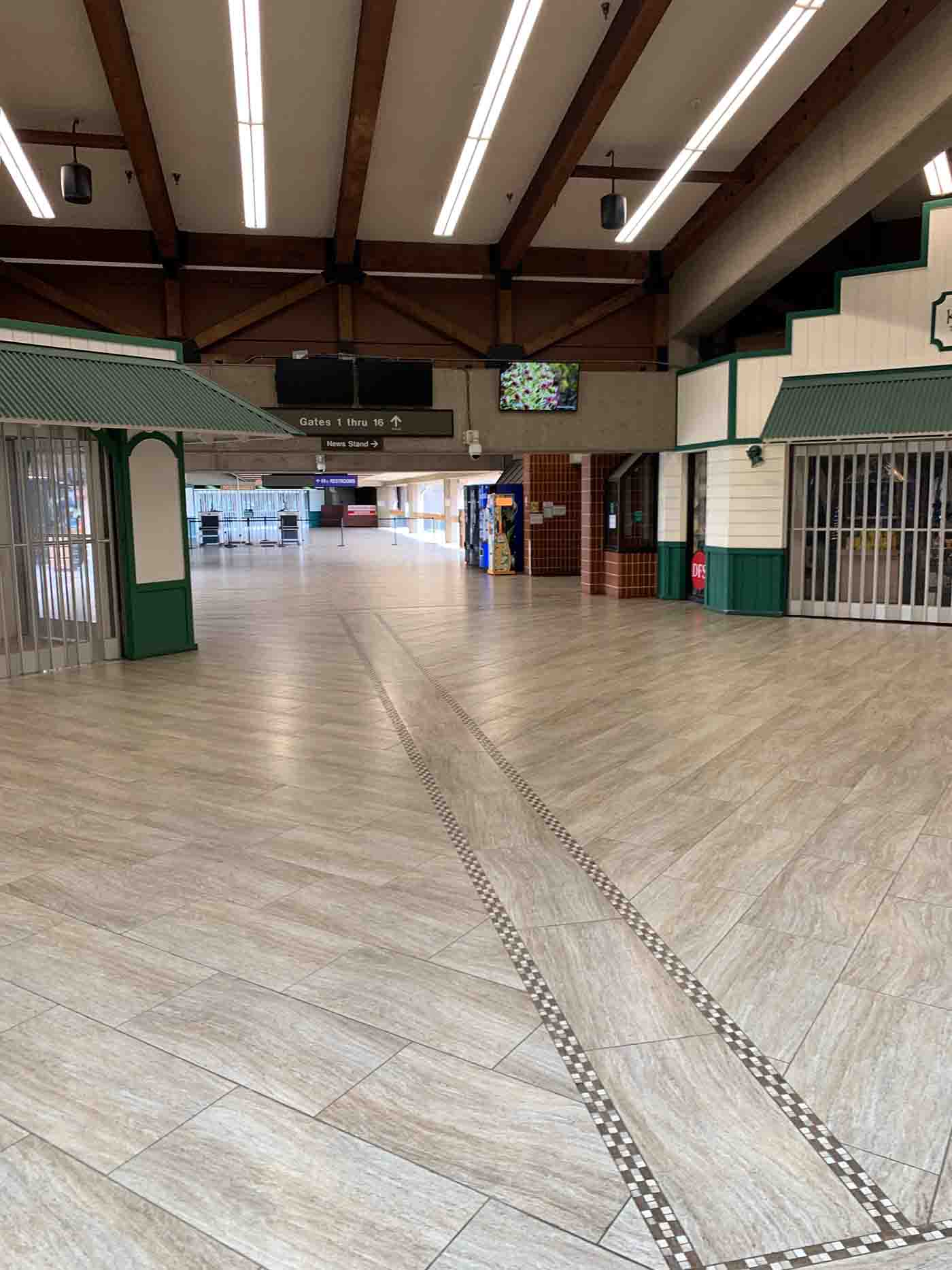(This series of stories is told from the perspective of our principal and managing partner, Justin Whedbee, CCP. During the COVID-19 outbreak beginning in early 2020, Justin did his best to continue serving our clients in the Islands while complying with travel restrictions and a variety of challenges brought on by the virus and accompanying shutdowns.)
As mentioned in the first episode of this series, each Hawaiian county had its rules for entry via work exemption. Each county had its own system, website and forms, and no two were alike. Maui County, in my experience, had the easiest application to complete and responded more timely than the others. Typically, I would receive approval from that county within a day.
Maui was also the easiest and most enjoyable of the neighbor islands to visit during COVID. One of the reasons was the type of aircraft used. (NOTE: I’m a bit of an aviation nerd, and it’s showing here.) Hawaiian Airlines has a fleet of Airbus A321 NEOs, and they use the planes for flights to the West Coast, normally into smaller airports, but not for LAX- and SFO-type routes. During COVID, most of those routes were closed. Commercial pilots have to complete a certain number of flight hours, takeoffs, and landings in a given period to be considered current for a particular aircraft. To keep their pilots qualified, Hawaiian Airlines flew the A321 daily on the Maui route. The A321 is a much more comfortable aircraft than the commonly used Boeing 717. I had preferred status on Hawaiian Airlines, and because of the low passenger loads during COVID, was regularly upgraded. The seats up front were quite lovely.
Arriving at Maui was easier than most other Hawaiian airports, except Molokai, which we’ll discuss next time. While their process changed with time, it was clear the changes were always focused on improving efficiency and saving time. The longest wait during these trips was ten minutes to get cleared after arrival at the terminal; in most cases it was less than three minutes. This was in stark contrast to other islands, where it could, and often did, take more than 30 to 45 minutes.
Upon arrival at a checkpoint, I often made light conversation, saying something like, “I’m here to pick up my pizza,” while my paperwork was being reviewed. During the lockdown, officials were serious, and their jobs tedious and very repetitive; anything to lighten the mood was welcomed. On one trip, I forgot to file for my travel exemption until late the day before. I rushed to get it done and checked online continually on the morning of departure for my approval. When my plane took off from Honolulu, I still did not have approval and was running the risk of getting turned around on arrival. Even after landing, I did not have the approval email. Fortunately, when I checked in with the county employee, it went right through, and I got my approval to pick up my rental car immediately. Luck was with me that day.
In addition to flying on nicer aircraft, I was also able to rent a full-size SUV (Expedition or Suburban) for just $30 a day. When full-size vehicles were $20, and SUVs were $30, you go with the SUV and its cooling seats every time!
In 2020, the Maui airport had just finished its new rental car center, which was across from the terminal. They also built a new train running between the baggage claim and the rental car center, which had a stop midway between them for use by passengers without bags or returning to the terminal. Because of COVID restrictions for passengers in confined spaces, the brand-new train was not operating. Luckily, the walk to the new rental center was short, five minutes or less, and the facility was nice. Right by the Hertz counter, there were ultra-clean bathrooms, allowing me the opportunity to fill my water bottle before hopping into my SUV with air-cooled seats. (Another COVID silver lining.)
Getting around Maui was easier than normal because fewer cars were on the roads. Going to Lahaina on the west side was still time-consuming, as there are few route options to reduce travel time. It was easier to stop at a convenience store to obtain water, a meal or a snack than on other islands, though I usually still packed my lunch to eliminate stops.




This is the main crossroads at the Maui Airport. During normal times this airport sees in excess of 17,000 passengers a day. Seeing practically no one here was eerie.
On my initial trip to Maui after the shutdown, I was the second person on scene of an auto accident. I pulled over, jumped out, and went to render aid. There was a Jeep lying on its side, with an older gentleman inside who was bleeding and suspended partially upside down. He was mumbling and definitely in shock, clearly disoriented; he was trying to get out and was likely to hurt himself more. Working with the other Samaritan, I supported him while we unbuckled his seatbelt. We then tore the Jeep’s roof open and extracted him to safety. We learned he was 76, and had suffered a couple of large cuts and a possible broken rib. For me, the idea of COVID-related social distancing was out, given the greater mission of helping the injured man until more aid could arrive. Emergency medical services arrived about eight minutes later, and took over care. Never a dull moment.

Accident scene I came upon on my first trip to Maui after the COVID shutdown was lifted. The injured driver was treated and transported by EMS professionals.
In general, travel to Maui during COVID was relatively painless. The county had its act together, and its ability to efficiently process passengers upon arrival was key to smooth work travel. Upon return, the line for TSA Precheck never had more than a couple of people in it, making check-in a breeze.
The next installment will be about my travels to Molokai during COVID. Mahalo!


